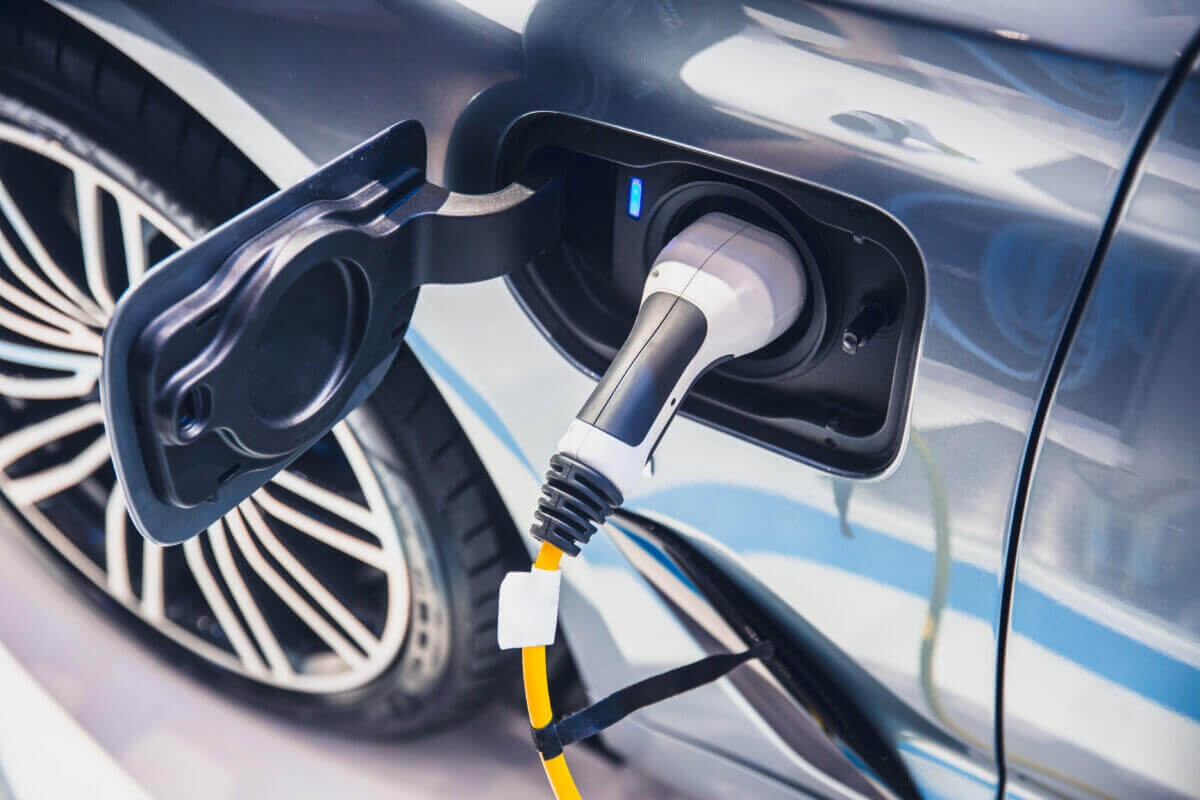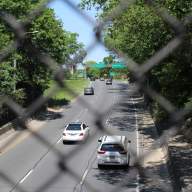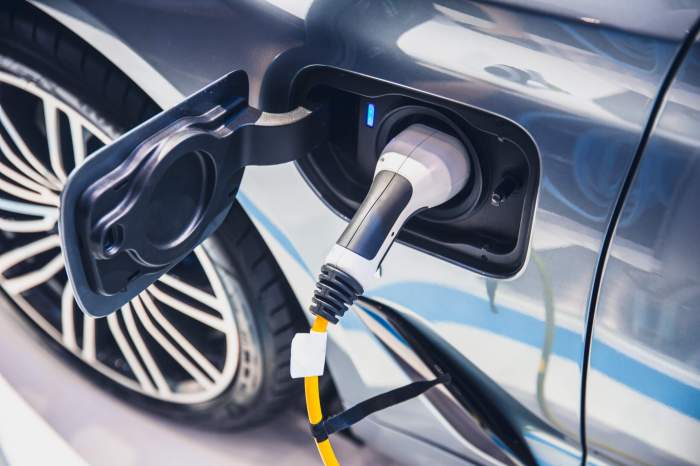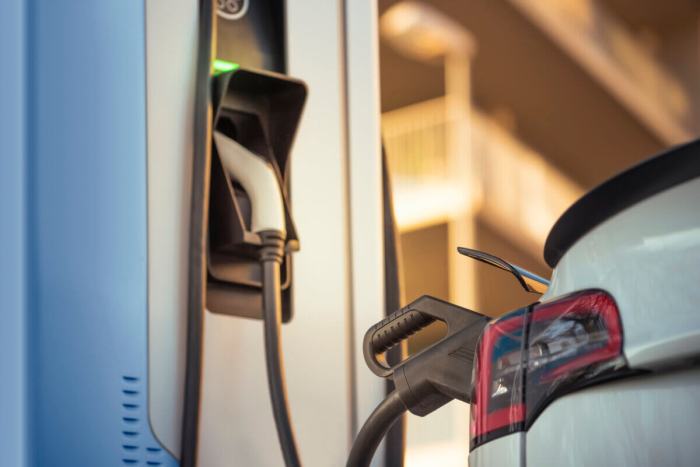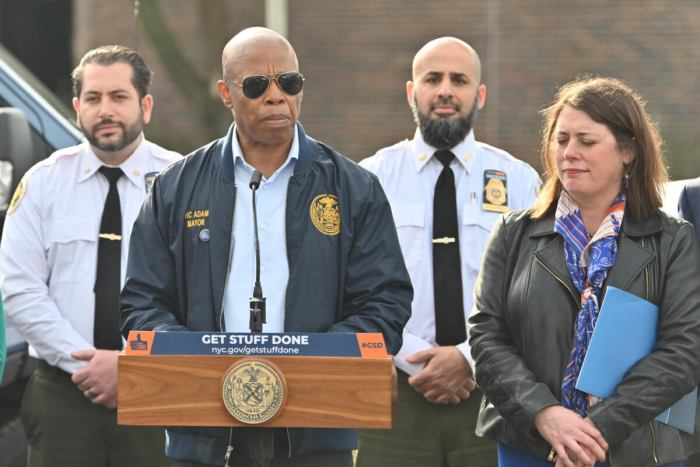As many New Yorkers do, I have prioritized walking, biking and public transit for years. As New York City’s transportation commissioner, I have committed my agency to making those modes of travel safe, affordable and convenient. However, roughly half of households in New York City have a car — and it is important we take steps to minimize the negative environmental and public health impact of these vehicles.
We have heard for years that electric vehicles (EVs) are the future. Despite a growing array of purchase incentives, the lack of convenient charging infrastructure is a major reason most city drivers have stuck with their fossil fuel–burning vehicles, making EV ownership rates here lower than elsewhere in the state or country.
Achieving a greener transportation future means investing in buses, biking and walking – and in public electric vehicle chargers that can help minimize damaging fossil fuels. That is why I am proud that the New York City Department of Transportation (DOT) and the New York Power Authority (NYPA) have taken a major step toward expanding access to charging infrastructure with our recent announcement of new fast-charging stations to be located at DOT municipal lots across the city.
Our agencies recently announced a commitment to install about 50 level 3 fast chargers at up to 13 different lots. This is significant because while level 2 chargers – more than 100 of which we have installed at curbsides around NYC in the last few years — can power up an EV in about five to eight hours, level 3 fast chargers can provide an 80% charge in as little as 20 minutes. Widely available fast charging provides peace of mind to EV owners. They can quickly charge up, and are particularly important for high-mileage fleets, like taxis and for-hire vehicles.
Funded by the state’s EVolve NY program, this partnership is noteworthy because of its scale and because these new hubs will dramatically advance equity. Currently, a map of fast chargers in New York City would show access largely limited to upper-income neighborhoods in Manhattan and the inner-ring of Brooklyn and Queens. Thanks to this program, expect to see fast chargers in moderate- and middle-income neighborhoods — from Canarsie in Brooklyn to Fordham in the Bronx and back to the Rockaways. By ensuring all New Yorkers have the option of going electric, more communities — including those with high burdens of air pollution, high rates of asthma and other poor health outcomes — will share in the benefits.
As an immigrant who was once a livery cab driver, I am especially excited how these new fast-charging hubs will benefit for-hire vehicle drivers, many who are also immigrants to the United States. For these drivers, who log long hours behind the wheel, access to affordable and convenient fast charging — particularly in the neighborhoods where they live — is critical to making EV ownership practical and cost-effective. With New York City’s plans to electrify all high-volume for-hire vehicles by 2030 — and with the state and many American auto companies also committed to an all-electric future in the next decade — we expect these hubs will be in very high demand in the years ahead.
And we are not even close to being done.
DOT is leading the way in expanding access to charging, as outlined in Mayor Eric Adams’ recently released climate action plan — PlaNYC Getting Sustainability Done. Under the mayor’s leadership, the city is committed to ensuring all New Yorkers live within at least 2.5 miles of a fast-charging hub by 2035. Between our partnership with NYPA, plans for fast-charging hubs at five additional DOT lots, and investments by the private sector, we are already closing in on 90% access. With NYPA and other partners, we expect DOT to be the primary provider of fast charging, in many parts of the city, including the South Bronx, southern Brooklyn and southeast Queens. As EVs become more affordable, and with the introduction of more incentives to purchase used EVs, fast-charging hubs will ensure New Yorkers who choose to own a car have the option of going electric.
DOT has a range of other initiatives to ensure the promise of electrified mobility is available to all, including partnering with delivery workers who use e-bikes to develop safe and convenient public battery charging, expanding access to e-bikes and e-scooters through our partnerships with Citi Bike as well as the planned expansion of the East Bronx e-scooter program, and working to increase the adoption of electric trucks through our Clean Trucks Program.
This strategy means New York City will be a leader in transportation electrification and a national model for equitable access to the kind of solutions to help save our planet.
Ydanis Rodriguez is the New York City DOT commissioner.
For more coverage, follow us on Twitter, Facebook and Instagram @bronxtimes

